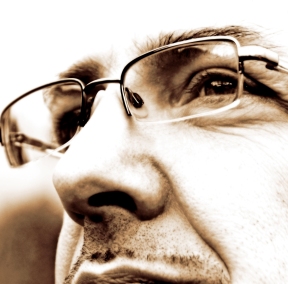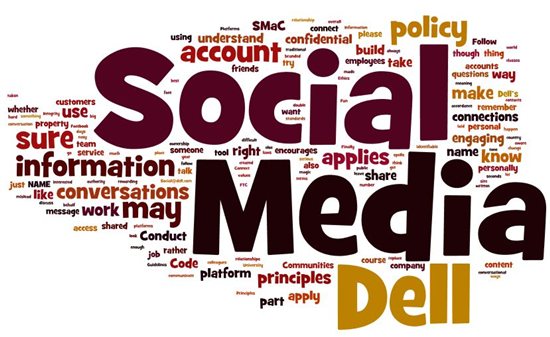 In comparison to younger people, people in the mature market do this:
In comparison to younger people, people in the mature market do this:
- save/invest more;
- spend more on luxury products and services;
- shop during morning hours;
- prefer “one-stop” shopping;
- consider shopping to be a social event;
- are very convenience-oriented;
- patronize reputable/traditional outlets;
- seek personal attention and special services such as valet parking and gift wrapping;
- choose products based on quality and brand name;
- are less price conscious and deal prone;
- use credit as often;
- are as likely to show non-significant responses to sweepstakes and telemarketing; and
- complain less when they are not satisfied with something they have bought.
So how do we convert these into profits? Read on to see the typical 4 Ps of marketing for the seniors market.
Positioning
Positioning involves the creation of an image in the minds of consumers for a product or service. It refers to what consumers think about your product or facility’s characteristics or offerings relative to other similar offerings. Positioning strategy is an important aspect of marketing decision making because it defines the specific actions that must be undertaken in the areas of promotion, product development, pricing and distribution.
By positioning a product or service as having certain characteristics, it stands a good chance of gaining advantage over competitive oferings when consumers associate it with the specific characteristic(s). Different positioning strategies are effective for different segments of older adults. Positioning a product or service along the following attributes is likely to effective:
- Convenience – The mature consumer is very convenience-oriented. Convenience means different things to different people, and could include location (in relation to a person’s home, work, or other retail outlets), ease of doing business by phone or mail, and ease of using products and services.
- Functionality – Older consumers are interested in the product’s intrinsic benefits, its objective characteristics, rather than subjective benefits such as what the product stands for in the eyes of others. With age, people become more introverted and, therefore, indifferent to the social benefits of the product.
- Quality – Older consumers are very quality-conscious. They are willing to pay a higher price in order to get a better-quality product or service.
- Dependability – With age, people become risk-averse and prefer hassle-free products and services. One way to ensure that they get such offerings is to buy a familiar or reputable brand or patronize a well-established and well-known retail vendor.
- Personalized service – Personal attention is important to older consumers who prefer to do business face-to-face. They value the personal relationship with the service provider, and they want to know that someone within the company cares for them.
- Product development – In developing new products or modifying existing products to better serve the mature market, companies have learned that they should not develop products or attributes of interest exclusively to the older person. Rather, an increasing number of providers develop offerings that have an intergenerational or universal appeal. This means products and attributes that can satisfy the needs of both younger and older consumers, but are most beneficial to the older person such as developing easy-to-open packages and containers.
Promotion
We have learned much over the past 20 years what types of messages appeal to the mature market. First, with respect to spokespersons, it is learnt that older people do not relate to older models. They relate more to those chronologically younger by ten to 15 years. Therefore, spokespersons should be considerably younger than the average age of the target market. Furthermore, when older people develop association between the product and the older user, many older people may not buy the advertised product because by buying it they would admit to their “old-age” status, and using the product would remind them of their old age.
Place or Distribution
In distributing products to older adults, an organization should attempt to use a variety of distribution methods, since the older consumer market is very diverse and prefers the various distribution methods as much as the general population (with exemption of the Internet, although the older market is the fastest growing age segment of Internet users). When using a direct marketing channel such as mail order, marketers should emphasize company reputation, adopt policies that reduce risk (such as free pick-up services for merchandise returns), and offer a variety of payment options.
When developing traditional retail distribution outlets, the following are recommended:
- locate retail establishments near other establishments;
- provide adequate parking and well-lighted parking lots;
- provide rest areas, such as small café-style areas, or benches;
- restrooms should be easy to locate;
- use adequate lighting;
- mark stairs with contrasting colors for easy height-change identification;
- use services such as valet parking, gift-wrapping, and package carry-out;
- consider innovative ways of using coupons (e.g. coupon dispensers, scanners, magnetic cards); and
- offer programs that reward long-term patrons, since older consumers are loyal customers.
Price
Pricing decisions should also take into account the needs and preferences of older consumers. Four general recommendations for pricing strategy:
- Offer price reductions when products and services are similar or standardized across sellers. Generally, older consumers are not very price sensitive and less likely to sacrifice quality for lower prices, but lower prices could entice them when no significant differences in product quality or service are perceived.
- Use premium pricing for drastically different products. Older consumers would pay a higher price for products suitable to their needs.
- Price product/service offerings “a` la carte.” Although older consumers are willing to pay higher prices for certain products, they are not willing to pay for product benefits and services they do not use or need. They are less likely to pay for “bundles” of benefits, when many of the benefits do not interest them. Therefore, when pricing products and services where a buyer has options, such as automobiles and cable services, marketers should make those options available for a cost rather than marketing all of them as a “package” of offerings.
- Do not over-emphasize senior discounts. Generally, senior discounts do not affect switching behavior. Seniors who use these tools buy more of the same brand or shop on different days of the week. Do not ask people to engage in activities that either remind them of their old age, label them as “old” or contribute to the definition of one’s self as an old person, because reality is that nobody wants to be old.
The changing demographics and the aging of the population are affecting the age composition of consumer markets. This, in turn, creates opportunities and challenges for organizations serving consumer markets.
Chintan is the Founder and Editor of Loyalty & Customers.






Thousands of boomers and seniors rely on the good advice they find on FreeSeniorCitizensSolutions.com to improve the quality of their lives. We have become their go-to resource for valuable information. Did you know we also offer the best products for seniors?
As a result of repeated requests, we have become a major supply source of products for senior citizens that are ideally suited to improving their quality of life. We supply carefully selected and thoughtfully produced items to make their everyday living easier. Our volume based merchandise is offered exclusively to groups and organizations.
Our products can be custom-branded with your organization’s logo or graphics.
Please contact us to discuss our Cooperative Buying Club. We service any size corporation, with a special service extended to our smaller client organizations.
Please let us know if you are looking for an item you may not see on our website. We offer tens of thousands of unique and innovative items for seniors – not all displayed on our site. Please contact us with any suggestions you may have
Warm Regards
Mark Bowman